That Fit Friend is supported by its readers. I [Jake Boly] run this site myself and buy the gear I review. If you purchase through my site, I may earn commissions on sales, read more here!
A barefoot basketball shoe for training. Are you serious? Yeah, those were my thoughts, too, when I started testing the Xero Shoes X1. These are designed as basketball shoes that feature a 0mm heel-to-toe drop with low midsole/stack height.
As someone who played hockey growing up, I had no desire to test these for basketball, but instead, I wanted to test them for training. Basketball shoes have long been some of my favorite shoes for working out, and I saw these as a unique option with their zero-drop, wider, and greater ground feel approach.
That said, if you’re here looking for a review of the X1 for basketball — I’m not your guy. Trust me, you don’t want to see me on the court and I wouldn’t do this shoe justice for that vertical.
I will, however, be discussing how this shoe works for lifting, cross-training, short runs, and daily wear, so if those are of interest to you, then you’ve come to the right place. I also felt positioning this review from this lens was something other reviewers/media sites would miss.
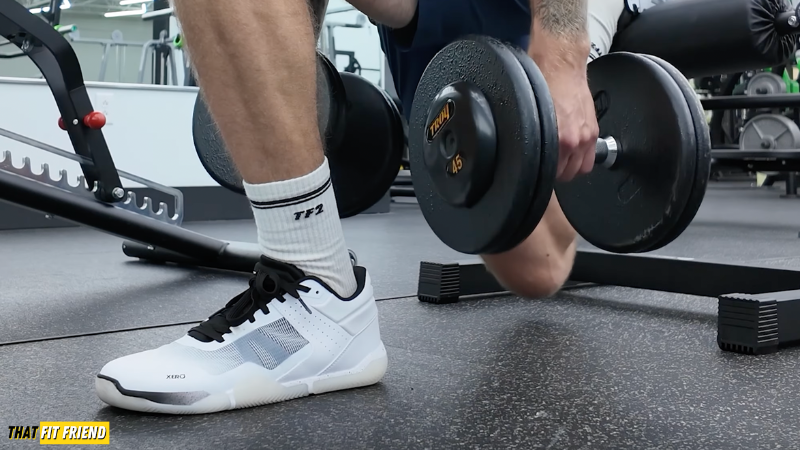
Who Should Buy the Xero Shoes X1?
- You want a little midsole but a barefoot feel. I don’t love training in barefoot shoes every day for plyometrics and athletic-style workouts. Sometimes it’s nice to have a little midsole for protection and comfort, and this shoe delivers there.
- You’ve been wanting a zero-drop shoe for balling. I’m not a formal basketball player, but I can see how this shoe differentiates from its competitors, especially if you want a flat shoe for playing.
- You like more ankle support. This model has a higher boot, which is great for giving you additional ankle support. If you love having more support for training, especially lateral movements, you’ll appreciate this.
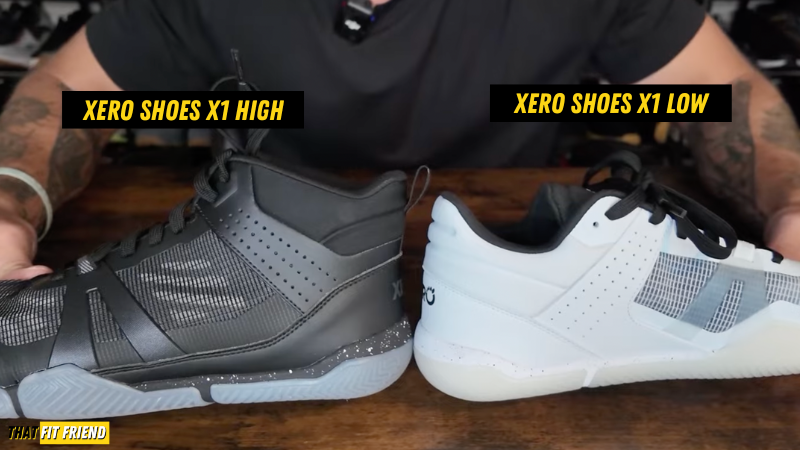
Who Shouldn’t Buy the Xero Shoes X1?
- Budget shopping generalists. Look, I really like the X1, but if you just want a minimalist shoe for training, you can find a ton of other great options with lower price points like the Xero Shoes Prio, Notorious Lift Radix, and Tolos Archetype 2.0.
- Exceptionally wide feet. These will be wide enough for the vast majority of people, but if you’re pushing 4E+ widths or if you constantly struggle with Xero Shoes, these won’t feel any different.
Sizing and Fit Thoughts (Toe Box Comparison)
For my shoe reviews, I buy a size 10 in every shoe so I can better compare models to one another. In every Xero Shoes review I’ve published, I’ve bought, worn, and tested size 10 models — just like in the X1.
About My Feet: I have a normal arch/instep and my feet come in at an E/EE width. The length of my left and right foot are consistent with one another, and I size as a true US 10 for most companies’ sizing charts.
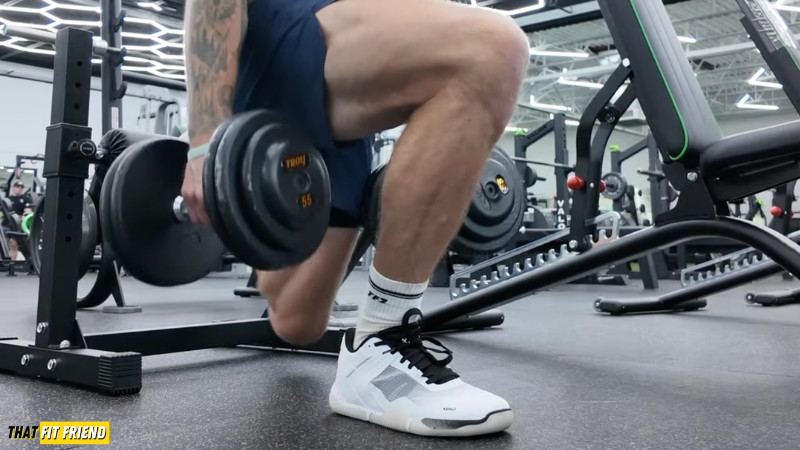
Narrow Foot (<D) Sizing Suggestions
- Go true to size.
These should fit decently well for narrower feet, and I don’t think you’ll feel like you’re “swimming” in this shoe when training and playing basketball. The upper has a profile that is low enough to help accommodate this.
You may have to wear thicker socks when balling or doing lateral plyos in these if you have narrow feet and want more security, but I think those occasions will be rather rare.
Medium Width Foot (D) Sizing Suggestions
- Go true to size.
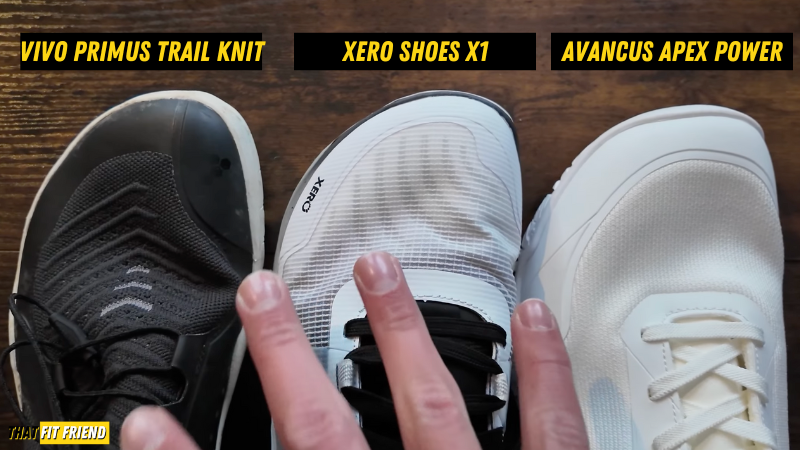
For medium-width feet, I think you’ll really enjoy the fit of the X1. They’re not so wide where you’ll be sliding, and there’s plenty of room for promoting toe splay even if you decide to rock thicker socks.
Wide Foot (E+) Sizing Suggestions
- Go true to size for E/EE.
For E/EE, and dare I say 3E foot widths, the X1 should fit true to size. The width will feel best for E/EE widths and for the 3E feet, you may feel a little snugness, but I don’t think it will be a total dealbreaker with these. Sizing up a half size could help 3E/4E widths if you traditionally are hitting the ends of your toe boxes.
I will say that 3E-width feet may also want to opt for the low-top model to make it easier for them to get their feet in and out of the shoe. For 4E feet, you may find these a little too snug, so if you decide to try them, keep them fresh so you can make a return if you need to. A solid 4E feet-friendly shoe for training would be the Be Lenka Velocity.
Performance Overview
Once again, to test the performance of the X1, I did NOT play basketball in them. I’m not going to sit and lie and act like I play basketball — or worse — I’m good at basketball. I’m a hockey guy, haha.
I made a point to exclusively test these for training because I know that’s how many other people will be seeing and using these. In my tests, I pushed this shoe hard for lifting, cross-training, some short runs, and daily wear.
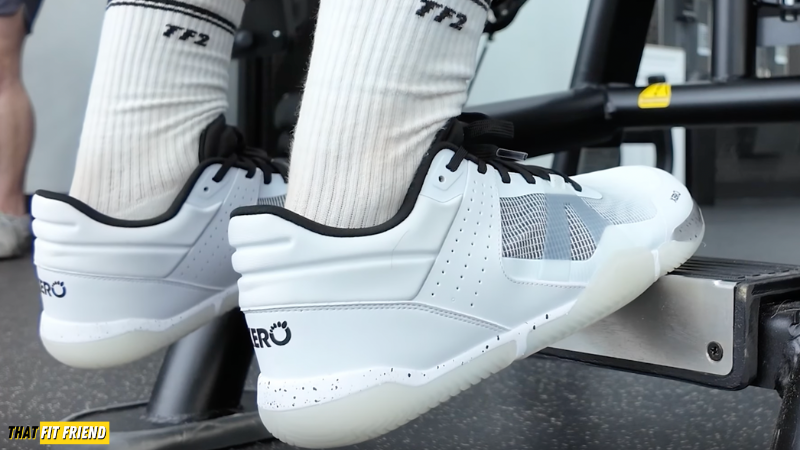
Great for Lifting-Focused Athletes
Unlike other barefoot shoes, these have a bit of a midsole to them. This gives you a little more foam under the foot when lifting, but I don’t think this will hinder this model’s stability by any means. Due to its lower stack height, I didn’t have issues when moving over 300 lbs in this.
For example, I was performing high-velocity 315 lb hover deadlifts to test this, and I didn’t notice any bounce or loss of balance. The midsole should be dense enough to train well north of 500 lbs if you want this shoe for that. My heaviest deadlifts yet in this shoe have been 455 lbs. I’ve turned a few sumo pullers who love ankle support onto grabbing these for their grip, security, and stability.
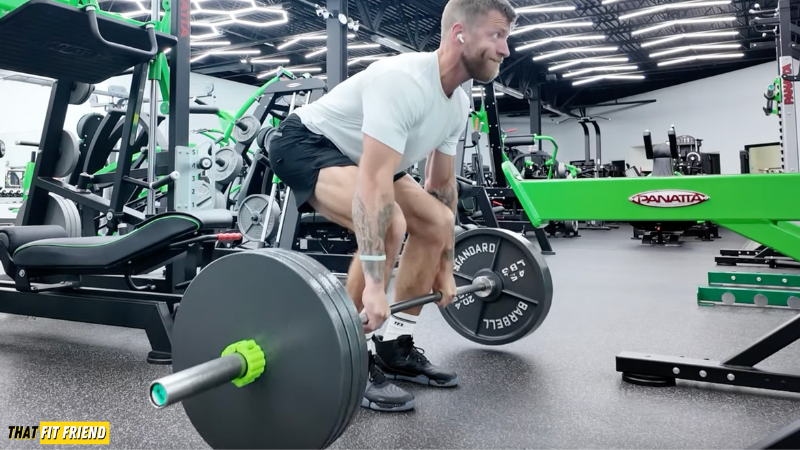
During my leg days, these have also felt solid. Since they’re built for basketball, they naturally articulate fairly well and have a nice blend of outsole grip with strategic breaks for forefoot and midfoot flexibility. For walking lunges and split squats, the forefoot has a good bend and doesn’t crease, so it doesn’t put a ton of pressure on the toes.
All-in-all, the X1 has been a solid option for lifting. I think it will be a good shoe for the athlete who loves to lift. Think, likes to perform power, strength, and hypertrophy movements all in the same workout at different velocities and intensities. The low stack and midsole gives you a nice blend of stability and comfort while not completely wrecking this shoe’s ability to promote ground feel.
A Strong Option for Cross-Training
Despite liking the X1 for lifting, my favorite area of training in this shoe has been cross-training — here’s why. I like using barefoot shoes for versatile workouts, but I’ll be honest, sometimes I like a little midsole for protecting my feet. When doing high-volume jumps, my feet and ankles can get a little more beat up which then takes away from my future sessions (this is after acclimating for years).
The X1’s midsole is dense; however, it gives you “enough” protection to not feel overly beat up when doing things like jump rope, broad jumps, and lateral plyos. Heel impact isn’t overbearing and the forefoot has a nice pop to it. I think if you’re used to barefoot shoes, then you’ll like this aspect. For anyone only used to traditional trainers, expect these to still have a denser feel when breaking them in.
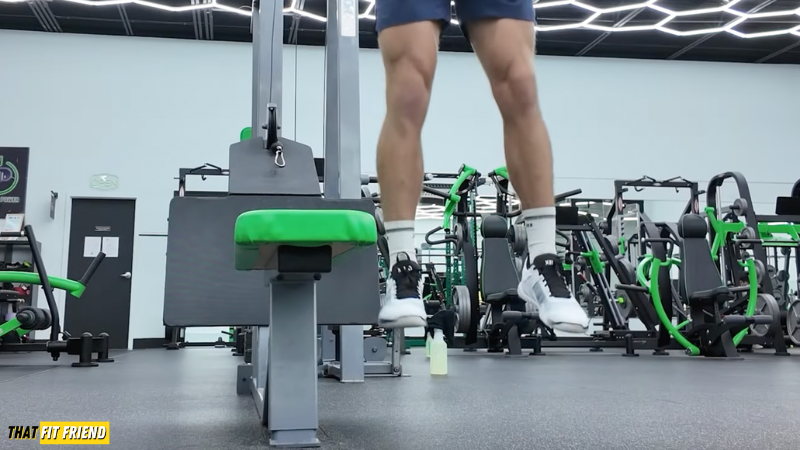
Outside of the small midsole, the main callouts for this shoe and why I’ve enjoyed them for cross-training revolve around the outsole (and its wraps) and the upper of this shoe. The outsole wraps up on the lateral and medial forefoot giving you additional security when being explosive. It’s a small feature, but if you’re used to court and basketball shoes, then you’ll appreciate this aspect.
The reinforced and layered upper is also nice for overall security. It’s not going to be the most breathable upper you’ve ever worn, but it’s not terrible, IMO. My one concern with this shoe for cross-training is the higher boot for those who constantly battle with shoes causing some friction on their medial and lateral malleolus. If that sounds like you, tread lightly with these or wear longer socks when breaking them in.
Short Runs, Walking, and Comfort Thoughts
For short runs, these performed about how you’d expect. Like any basketball-oriented shoe, they’re built for high-volume short spurts of movement, but not steady state runs. If you’re wanting these for 100-800-meters jaunts and you’re used to denser feeling shoes, then you’ll be plenty fine in these.
Comfort-wise, they’re not terrible at these distances. I primarily used them for short 250-meter treadmill intervals where I was boogying. The grip and midsole felt fine. Would I use these for running bouts longer than a mile at a time? No, I would not. Grab the HFS 2 for that. I think for that distance the higher boot and lack of breathability would start to feel offputting.
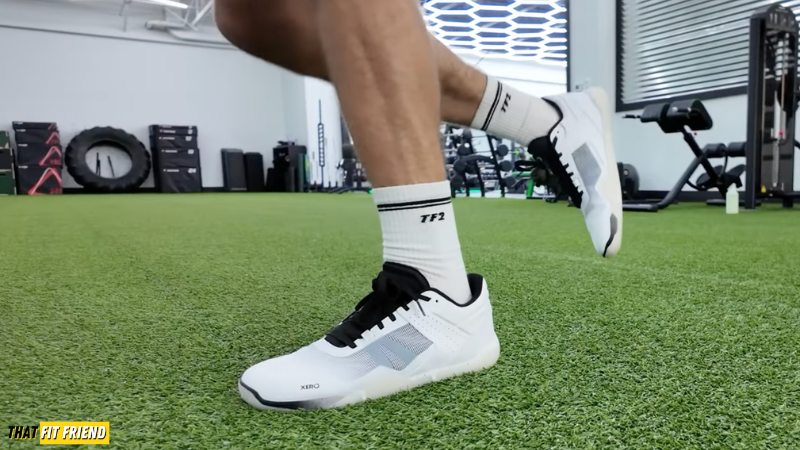
In the context of daily wear and general comfort, I’ve liked these overall. Would I buy these exclusively for daily wear if you want something super fashionable? Eh, probably not. However, for a shoe from Xero Shoes (who aren’t always known for their shoe appearances), these do look pretty dang good and multiple commenters on my video review have said the same thing.
They’re the type of shoe you can wear for some of the day, then go train and play basketball in. I also like that they do have a little more comfort than a traditional barefoot shoe with a <6mm stack height, so they could be a good option for the athlete and lifter looking for a zero-drop daily wear option that has a bit more midsole, but not as much as normal trainers and walking shoes.
Construction Details
Upper
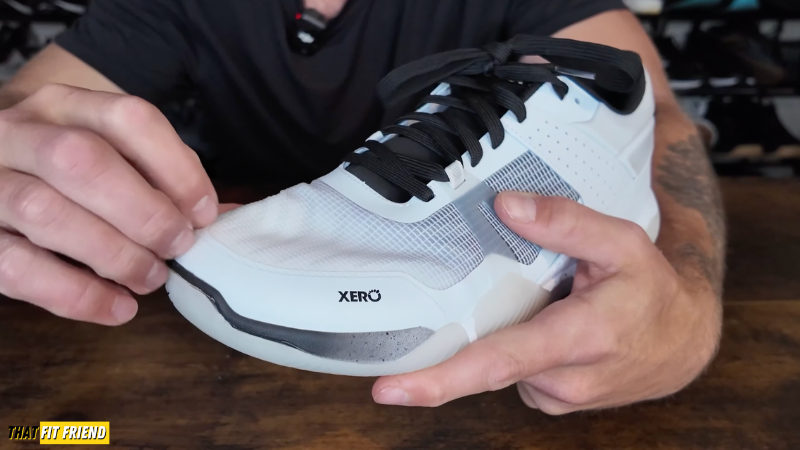
The forefoot features a synthetic overlay and a light internal toe guard. There’s a layered textile and mesh that extends from the front of the forefoot into the midfoot. At the base of the midfoot and heel, there’s a heavier textile for additional security and support.
There are a few areas where this material is perforated. The heel is built with a padded mesh material for comfort. Internally, the heel has a cup for lockdown and security.

Midsole
This shoe features a low stack height and has a thin layer of foam. I measured this midsole at just about a centimeter regarding stack height. The foam used has a medium-density feel and you can’t compress it super easily with your fingers. So, if you’re a barefoot shoe lover and you read “foam midsole,” don’t freak out about compression!
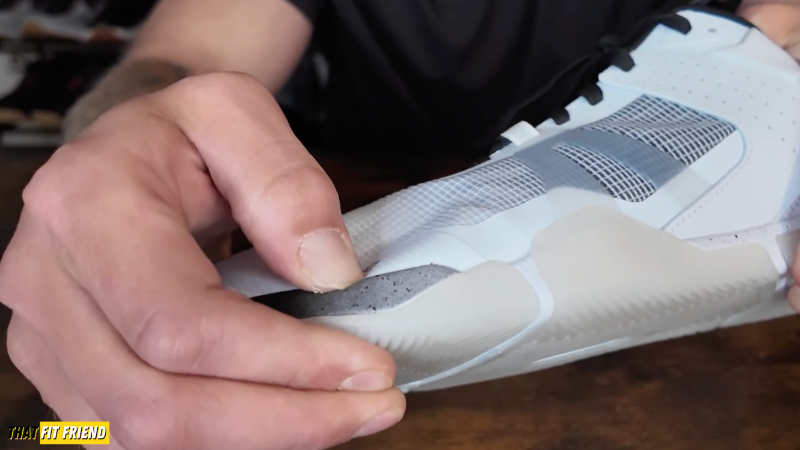
Outsole
The outsole is built with a herringbone tread pattern, which is stereotypical of most basketball shoes. The lugs aren’t super deep, so you don’t lose out on ground feet with them. There’s strategic outsole breaks at the base of the forefoot and heel for flexibility.
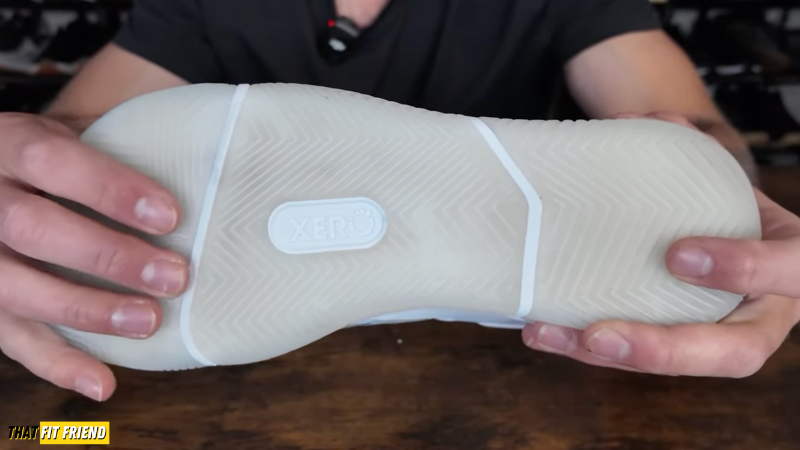
Laces and Tongue
There are six core eyelets with a seventh for lace-lock. The tongue is built with a padded mesh material, and there’s a gusset for security purposes. I never had major issues with tongue security with this shoe.
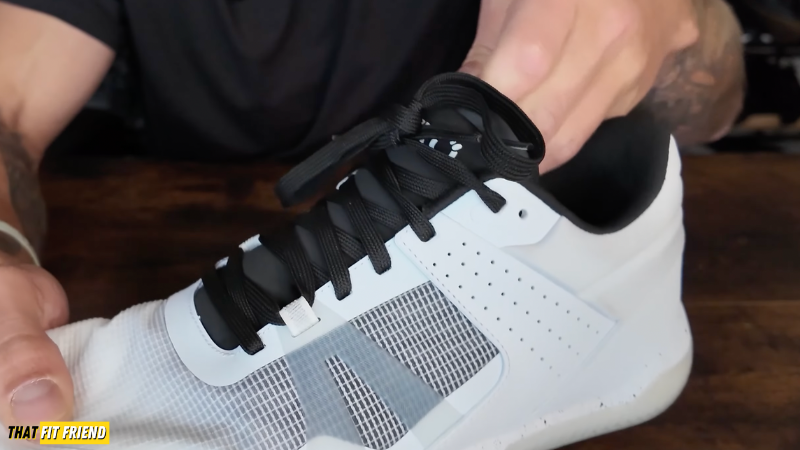
Final Remarks: Would I Get Them Again?
I would, 100%.
I feel like I’m also the perfect demographic for this shoe, in that I like having a little midsole for my athletic sessions but also want a wider fit and good ground feel.
For training, this shoe has been exceptional and I think they could be one of those shoes that transcend their primary performance niche (basketball).
They are more expensive so I don’t think they’ll be for everyone, however, if you fall into the context above like me — I think you’ll like them.
Hit me up in the comments here or on Instagram if you have additional questions about this shoe.

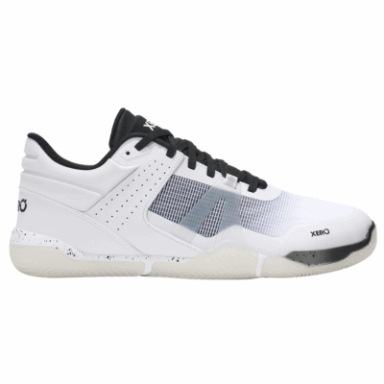
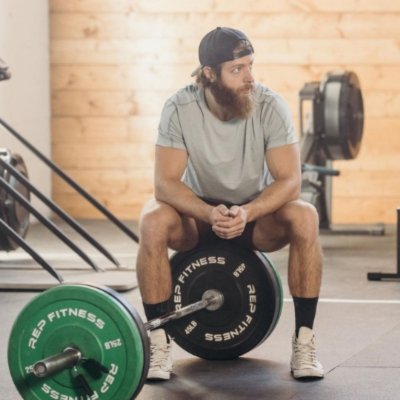


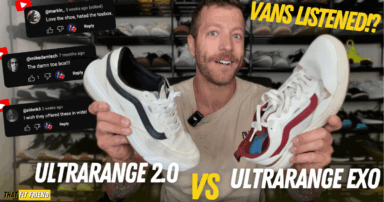
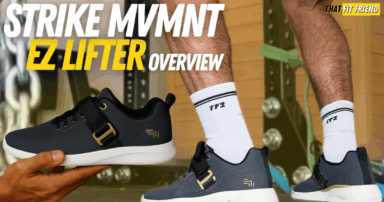
Nick
I found my way here from your Altra XT3 review. Excellent review. I wouldn’t wear them for basketball but I’ve been looking for a training shoe to complement basketball focused workout (plyo, leg lifts, sprints and stairs) and this seems like a perfect option. Your reviews are really helpful and give me exactly what I need.
Ay, thank you so much Nick! Keep me posted on how you like the X1s once you give them a go!